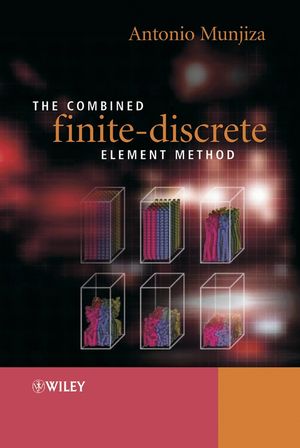The Combined Finite-Discrete Element MethodISBN: 978-0-470-84199-0
Hardcover
352 pages
April 2004
 This is a Print-on-Demand title. It will be printed specifically to fill your order. Please allow an additional 10-15 days delivery time. The book is not returnable.
|
||||||
The combined finite discrete element method is a relatively new
computational tool aimed at problems involving static and / or
dynamic behaviour of systems involving a large number of solid
deformable bodies. Such problems include fragmentation using
explosives (e.g rock blasting), impacts, demolition (collapsing
buildings), blast loads, digging and loading processes, and powder
technology.
The combined finite-discrete element method - a natural extension of both discrete and finite element methods - allows researchers to model problems involving the deformability of either one solid body, a large number of bodies, or a solid body which fragments (e.g. in rock blasting applications a more or less intact rock mass is transformed into a pile of solid rock fragments of different sizes, which interact with each other). The topic is gaining in importance, and is at the forefront of some of the current efforts in computational modeling of the failure of solids.
* Accompanying source codes plus input and output files available on the Internet
* Important applications such as mining engineering, rock blasting and petroleum engineering
* Includes practical examples of applications areas
Essential reading for postgraduates, researchers and software engineers working in mechanical engineering.
The combined finite-discrete element method - a natural extension of both discrete and finite element methods - allows researchers to model problems involving the deformability of either one solid body, a large number of bodies, or a solid body which fragments (e.g. in rock blasting applications a more or less intact rock mass is transformed into a pile of solid rock fragments of different sizes, which interact with each other). The topic is gaining in importance, and is at the forefront of some of the current efforts in computational modeling of the failure of solids.
* Accompanying source codes plus input and output files available on the Internet
* Important applications such as mining engineering, rock blasting and petroleum engineering
* Includes practical examples of applications areas
Essential reading for postgraduates, researchers and software engineers working in mechanical engineering.



